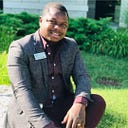Women in politics: such a burden to wear!
Women in Burkina Faso are conspicuous by their absence in the decision-making spheres. It is even a challenge to access the closed and macho circle of politics. How to explain this under-representation of women in these instances?
Statistics are alarming. Out of the 14 Burkina Faso presidential candidates in 2015, only 2 were women, and they ended respectively 6th and last in the overall ranking. A very meager assessment with regard to the proportion of the female population estimated at more than 52% of Burkinabe.
This gender imbalance is also perceptible within the executive. Only 07 positions were awarded to women out of 32 in total, all functions combined (those of minister, deputy minister and secretary of state). To this, it should be noted both President and Prime Minister of Burkina Faso are men.
At the legislative level, the proportion is even more gloomy: only 10 MP are women out of 127 MP in total with a low proportion of 12, 7%; while the quota of women in the electoral roll is agreed on 30%.
How can one explain the political reluctance of women in Burkina?
The first explanation is genital. The state of play of the Burkinabe political class denotes an old-fashioned mode of management. Indeed, political architecture is, at first glance, imitated from the traditional management system of power by the chieftaincy and other social groups (which confer a role of leader to the man and a secondary role of housewife, of educator of the children, to the woman). Therefore, it is difficult, if not impossible for the woman, to deconstruct the collective imagination and to grant the confidence and assent of the electorate.
The second difficulty is related to literacy. According to statistics, the literacy rate of women decreases as they climb the educational ladder. “In terms of the number of students enrolled in public and private higher education institutions (IES), it increased from 68 894 in 2011–2012 to 74 2756 in 2012–2013 with 32.4% of girls and 21.2% for the private sector, [an average of 26.8%] “(Scoreboard / Higher Education in Burkina / PDF). A very low rate if we refer to the gross primary school enrollment rate which was 81% in 2012–2013 (Ministry of national education). This situation does not favor the woman who enters an “asymmetrical” political battle with man, to be less educated and probably less capable.
As for the third bottleneck, it is about the lack of financial means. Indeed, political communication through media outbursts (during election campaigns) plays an important role in electoral mobilization and participation. This unfortunate state of affairs has the corollary of confining the Burkinabe woman in need of financial support.
